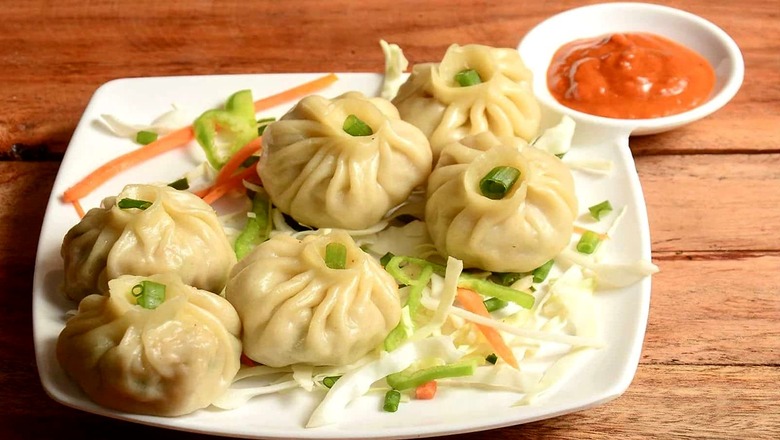
views
Shall I be honest with you? I am not really a momo fan. As much as I may like dim sums like Siu Mai or Har Gau, or Chueng fan crispy or otherwise or even a Char Siu, momos are still really not my thing. And trust me; I have sampled them in every place I have managed to find them.
I’ve stopped at the Thapa stalls in Mumbai, where they sell their momos out of aluminum steam boxes, I have visited the Tibetan or was it the Meghalaya stall at Dilli Haat in Delhi, even given a shot to the Kalimpong Momo guys in Kolkata. That is not all, I have even hunted for the most revered and extolled momo sellers in McLeod Ganj and Dharamsala. I’ve had them on highways while driving between Shillong and wet Cherrapunji, in homes and in cafes.
Steamed, pan-fried, and deep-fried but I never understood them. Much like I never understood that whole wannabe hippie generation, with half-baked left leaning ideologies, who took epic trips to the yet undiscovered northeast and travelled in a rickety bus one on top of another to attend music festivals while ingesting large amounts of marijuana and listening to Bob Dylan, and wholeheartedly embracing momos as gourmet.
Most of these momos, especially made by old Tibetan women on the street had thick doughy covers stuffed with mostly insipid tasting pork, chicken or vegetables.
It’s only when we Indians realised that this fairly simple to make snack could be acquired into our cuisine, hijacked into our daily menus and transmogrified into an Indian delicacy that the momo really came into itself.
The history of the momo dates back to as early as the 14th Century Nepal. The Newaris of Nepal are the historical inhabitants of the Kathmandu Valley. They are creators of its historic heritage and civilisation. Besides creating nearly all the temples and shrines, the pagodas and the stupas in Kathmandu, the Newaris also invented the momo. In Newari, ‘mome’ means cooking by steaming and that’s exactly what a momo was a steamed dumpling. It is believed that the Newari merchants who traded with and travelled to Tibet fell in love with these Tibetan dumplings. These steamed dumplings made out of Yak meat was the staple food in the Himalayan region. They brought these dumplings back home to Nepal and (I have no idea if this is accurate).
It was from Nepal when a Nepalese princess married a Tibetan king in the late 15th Century that dumplings were exported to China and as far away as Korea and Japan, making the momo, the mother of all Jiaozis, Mandus, and Gyozas. Of course, the Chinese added a bit of sophistication to the momos as did the Italians and created the tortellini and ravioli.
If the 15th century China and Japan could adapt and embrace the momo, why can’t the 21st century India? In fact, we have almost seized the momo and made it our own.
A momo is essentially maida dough wrapped around cooked vegetables or meat. Once wrapped into small parcels, they are usually steamed in a metal utensil with holes at the base. But they can also be baked, fried, or boiled. Momos appeared on the Indian street food scene about 20 years ago and seem to have started on roadside carts in and around the Jawaharlal Nehru campus in Delhi. These steamed and fried vegetarian or chicken momos were perfect fodder for the hungry students who would throng these carts at all times of the day. Served with a dangerous looking flaming red chutney with chillies, masquerading as a Schezwan sauce, the momos perfectly suited our spice buds.
Today, momos are just everywhere in India. And like we have innovated with the burritos and quesadillas, the pizzas and the pastas, burgers and Burmese khao suey, so have we with the momo. Today, on the streets of Mumbai, and in dedicated momo takeaways, such as Wow Momos, you can get chicken and cheese, veg, chicken, prawn, and Schezwan at its most basic. You can get a Chicken Darjeeling Fried, Steamed or Pan Fried Momo. A paneer momo, or a corn and cheese momo, a chicken butter masala momo, or chicken Tandoori momo, momo Au Gratin, chocolate or Fried momos in manchurian gravy, chicken fried momos topped with red, green sauce and mayonnaise and anything that you may want to imagine. I won’t be surprised if we have momos with Kerala Stew or Goan Curry as well.
Once again we have proved that our Indian food culture is so robust, that we can pretty much make everything our own.
Kunal Vijayakar is a food writer based in Mumbai. He tweets @kunalvijayakar and can be followed on Instagram @kunalvijayakar. His YouTube channel is called Khaane Mein Kya Hai. The views expressed in this article are those of the author and do not represent the stand of this publication.
Read all the Latest Lifestyle News here




















Comments
0 comment